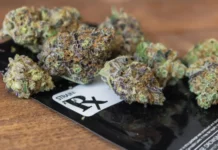Marijuana, also known as cannabis, is the most popular drug on the planet. However, because the US Food and Drug Administration has designated it a Schedule I controlled substance, there is virtually no federal money for independent research into marijuana’s potential to heal and/or harm. Hence, medical professionals’ knowledge of marijuana, the chemical compounds therein, and its effects on humans is, to say the least, lacking. Regardless, states are rapidly passing laws that legalize its use in medicine.
Marijuana and the chemical compounds it contains are regularly being used to treat symptoms such as pain, insomnia, depression, anxiety, nausea and vomiting. However, precious little evidence exists to prove or disprove the benefits and risks of using marijuana for these medical purposes. The scientific community agrees: further study is required.
Typical drug development starts at the discovery of a drug target and proceeds to the development and testing of chemical compounds. Next, professionals use clinical trials to obtain FDA approval of the drug, which by this time is presumed safe, comes with dosage guidelines, and is intended for specified conditions. Cannabis, on the other hand, has had a long history of use before its users attempted to understand its effects on the human body. Today’s healthcare providers are being asked to work with a drug they do not fully understand.
Further clouding the issue of medical marijuana use is that there are many variations of the plant, all with differing amounts of its two best-known chemical compounds: cannabidiol (CBD) and tetrahydrocannabinol (THC). Crossbreeding has produced plants with extraordinarily high levels of THC, plants with almost no THC but lots of CBD, and many combinations in between. Furthermore, since medical marijuana is not found in the US Pharmacopeia (a collection of drug information for the United States published annually by the United States Pharmacopeial Convention), it is not subject to standardization and purity requirements. Unlike when they purchase most other drugs, our patients cannot know precisely what they are getting when they buy cannabis products.
Almost as varied as the plant’s potencies are its methods of consumption: joints, edibles, capsules, sublingual products, oral mucosal sprays, intramuscular injections, topical applications, teas and vapor. Patients may wonder which is best for their particular symptom or illness, and how much they should take. They may inquire about the differences between herbal and synthetic products, and if medical marijuana interacts with their other medications. Providers simply do not have answers to these questions.
In the face of increasing legalization of medical marijuana, physicians, nurse practitioners, pharmacists and others trained to practice evidence-based medicine are becoming increasingly aware of and uncomfortable with their own lack of knowledge. The trend in this country of legalizing the use of a drug that clinicians are ill prepared to recommend or denounce is unsettling at best, inhumane or dangerous at worst.
Research shows that there exists a widespread lack of knowledge among U.S. healthcare providers about medical marijuana. Our ignorance negatively affects patient care. Patients with chronic illnesses and unpleasant symptoms on which marijuana may have an effect are unlikely to get sound advice, and patients who use marijuana and experience harm may never come across a provider who has the knowledge to correct the problem, or the confidence to initiate the conversation in the first place.














